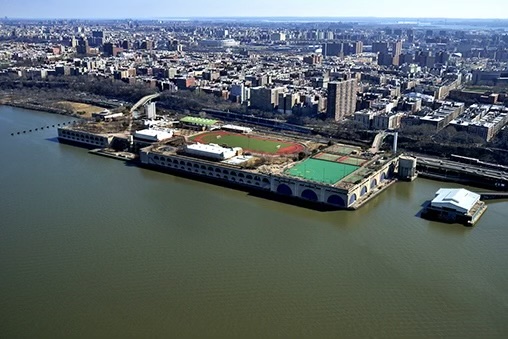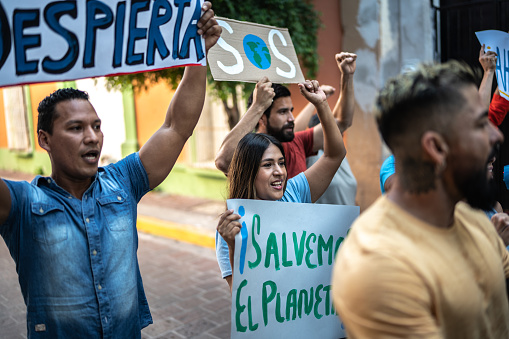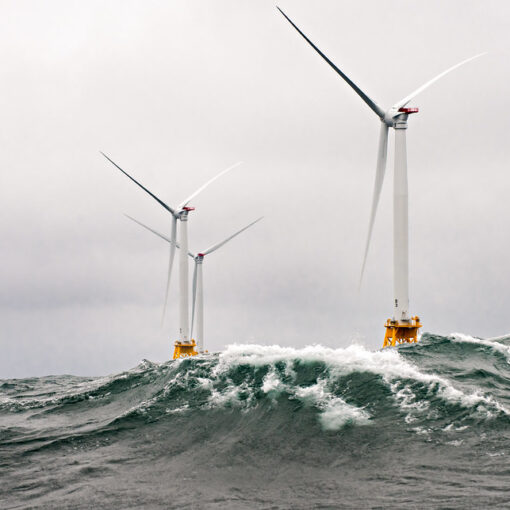 On March 4, 2025, the Supreme Court handed down an important ruling in City and County of San Francisco v. Environmental Protection Agency. In a 5-4 decision, the Court curtailed the Environmental Protection Agency’s (“EPA”) authority under the Clean Water Act (“CWA”) to issue pollutant discharge permits. The case involved a wastewater treatment facility that discharged treated water into San Francisco Bay under a CWA permit issued by EPA. The Court held that EPA cannot enforce permit provisions that “make a permittee responsible for the quality of the water in the body of water into which the permittee discharges pollutants,” requiring EPA to instead determine the specific steps the permittee must take to protect water quality.
On March 4, 2025, the Supreme Court handed down an important ruling in City and County of San Francisco v. Environmental Protection Agency. In a 5-4 decision, the Court curtailed the Environmental Protection Agency’s (“EPA”) authority under the Clean Water Act (“CWA”) to issue pollutant discharge permits. The case involved a wastewater treatment facility that discharged treated water into San Francisco Bay under a CWA permit issued by EPA. The Court held that EPA cannot enforce permit provisions that “make a permittee responsible for the quality of the water in the body of water into which the permittee discharges pollutants,” requiring EPA to instead determine the specific steps the permittee must take to protect water quality.
The Supreme Court’s decision could have implications for certain marine carbon dioxide (“mCDR”) activities that require permits under the CWA. While many uncertainties remain, this post attempts to shed light as to possible implications the decision may have on mCDR.
Statutory Background
The CWA prohibits discharges of pollutants by any person without a permit. A discharge is defined as an “addition of any pollutant to navigable waters from any point source,” including pipe, outfall structure, or other conveyance.
Under the CWA, EPA and authorized state agencies may issue permits authorizing the discharge of pollutants. These discharge permits (also known as NPDES permits) contain provisions specifying the quantity of pollutants that can be discharged, known as “effluent limitations” or “end of pipe limitations.” Effluent limitations fall into two categories: (1) technology-based effluent limitations (“TBELs”), which restrict the “quantities, rates, and concentrations” of harmful materials a permittee may discharge based on available treatment technology; and (2) water quality-based effluent limitations (“WQBELs”), which set discharge limits based on applicable water quality standards when TBELs alone are insufficient to meet those standards. Based on the TBELs and WQBELs, EPA determines (and specifies in the discharge permit) the rate, flow, and/or concentration of pollutants that may be discharged. For example, effluent limitations in a discharge permit may specify the average monthly quantity of oils and grease that may be discharged (in mg/L or lbs/day), based on available treatment technology and applicable water quality standards. In addition to effluent limitations, discharge permits also contain “narrative limitations”, which prescribe best practices, such as monitoring, reporting, and recordkeeping requirements.
Discharge permits sometimes include requirements that the receiving waters must meet applicable water quality standards. In City and County of San Francisco v. Environmental Protection Agency, the Supreme Court described these as “end-result requirements—permit provisions that do not spell out what a permittee must do or refrain from doing but instead make the permittee responsible for the quality of the water in the body of water into which the permittee discharges pollutants.” For example, the permit held by the San Francisco wastewater treatment facility “prohibit[ed] the facility from making any discharge that contribute[s] to a violation of any applicable water quality standard for receiving waters … [or] create[s] pollution, contamination, or nuisance as defined by [the] California Water Code.” In theory, then, the facility could be found to have violated its permit if its discharges contributed to water quality in the receiving water body falling below applicable standards, regardless of the facility’s compliance with the permit’s effluent and narrative limitations.
EPA and authorized state agencies can provide both individual and general discharge permits. Individual permits are tailored to the site-specific conditions of a single discharger. General permits are intended to cover multiple dischargers with similar operations and types of discharges, and often contain end-result requirements.
San Francisco v. EPA
The City of San Francisco, as owner of the wastewater treatment facility, challenged the two end-use requirements in its permit. In short, the City argued that EPA lacked authority under the CWA to impose end-use requirements, and the Supreme Court agreed.
The Court held that EPA and, by extension authorized state agencies, lack authority to “impose NPDES permit requirements that condition permitholder’s compliance on whether receiving waters meet applicable water quality standards.” On that basis, the Court held that end-result limitations, such as those in the discharge permit issued to the wastewater treatment facility owned by San Francisco, were invalid.
The Court did, however, hold that EPA has authority to include effluent limitations and narrative limitations in discharge permits. The Court interpreted the CWA to authorize “the EPA to set rules that a permittee must follow in order to achieve a desired result, namely, a certain degree of water quality.” In other words, according to the Court, EPA’s authority is limited to laying down steps that the permittee must take to achieve applicable water quality standards. The primary basis for the Court’s decision was their concern over the “permit shield,” a provision under the CWA which protects the permit-holder from liability if they adhere to the terms of the permit. In the Court’s opinion, end-result requirements prevent the permit-holder from being able to take refuge under the permit shield, even if they comply entirely with effluent and narrative limitations. The Court believed that it was the responsibility of EPA to determine what steps should be taken to prevent water pollution, instead of leaving discretion to the discharger through the use of broadly worded end-result requirements.
The dissent on the other hand noted that the text of CWA §301(b)(1)(c) empowered EPA to implement end-result requirements. In response to the majority’s concerns over the permit shield, the dissent countered that if EPA imposed end-result requirements in contexts where permittees cannot control the quality of the receiving waters – such as where there are multiple dischargers – then the permittee could challenge EPA action as “arbitrary-and-capricious” under the Administrative Procedure Act.
Following the majority’s ruling, it is clear that EPA can no longer use end-result limitations in permits to ensure water quality standards are maintained. There is, however, some uncertainty as to what will happen to existing permits with end-result requirements. It may be that the permits remain valid but with unenforceable end-result requirements, or EPA may have to issue new permits without those requirements. In the past, EPA and some states have included broadly worded prohibitions in permits – e.g., prohibiting “discharges which do not, or will not, result in compliance with applicable effluent limitations or water quality standard” – which may now be invalid. That could have major implications for the operation of permitted facilities.
As the dissent noted, end-result requirements were often used in situations where EPA lacked the information necessary to develop tailored effluent or narrative limitations. EPA reasoned that, in such situations, it had limited options: it could deny a permit application until further information was provided, or it could issue a permit with broadly-worded end-result requirements, or it could simply refuse to issue a permit. EPA had viewed the second option as preferable but now as it’s off the table, it might be forced to deny permit applications until the information it needs to develop tailored limitations is available. That could lead to the shut down of critical systems, such as San Francisco’s sewer system in the present case.
End-result requirements were also commonly used in general permits, which cover a broad category of dischargers. As the dissent noted, “[i]n lieu of individualized and prescriptive permitting conditions – which would take time to craft and with which small businesses might have difficulty complying – EPA instead allow[ed] the permittee to proceed under more general language. EPA [could] therefore issue the permit quickly and give responsible permittees flexibility to choose how to comply with the permit.” Following the majority’s ruling, this will no longer be possible, and EPA will be forced to develop more tailored requirements, which could take significant time. Delays could be further compounded by understaffed permitting offices resulting from EPA layoffs.
How is mCDR affected?
mCDR refers to ocean-based processes or techniques designed to remove carbon dioxide from the atmosphere and store it for long periods of time in the ocean. One commonly discussed mCDR technique is ocean alkalinity enhancement, which involves adding alkaline substances to ocean waters. The goal is to trigger a series of chemical reactions, whereby carbon dioxide in the water is converted into other (more stable) forms of dissolved inorganic carbon, and thereby enable the ocean to uptake additional carbon dioxide from the atmosphere.
A number of companies are looking to advance ocean alkalinity enhancement in the U.S. Some want to use existing coastal outfall structures, for example at wastewater treatment plants, to add alkaline substances to the ocean. This is seen as having multiple benefits, including avoiding the need for new construction and reducing permitting challenges, at least where those existing outfalls already hold permits under the CWA. Many mCDR operators hope to “piggy-back” on those existing permits. Others intend to secure individual permits for their projects. Last month’s Supreme Court decision might affect their ability to do that.
As noted above, in the past, EPA often issued permits with end-result requirements where it lacked the information needed to develop tailored effluent and narrative limitations for particular activities. Now that it can’t do that, it might simply refuse to issue permits in such situations. That could be particularly problematic for mCDR activities, which are still in the early stages of development, and thus present significant unknowns. EPA could thus very well conclude that it doesn’t know enough to develop tailored requirements for the activities, adding significant time and complexity to the permitting process, and potentially even leading to permit applications being denied. This could be an issue, not only for those mCDR operators planning to secure individual permits for their projects, but also those hoping to “piggy-back” on existing general permits. As noted above, many existing general permits include end-use requirements and thus might be held invalid and need to be re-issued, which (again) could complicate the permitting of mCDR projects. mCDR operators should keep an eye on EPA’s next steps to understand the potential impacts of this decision on the field.

Ashwin Murthy
Ashwin Murthy is the Negative Emissions Fellow at the Sabin Center for Climate Change Law.




